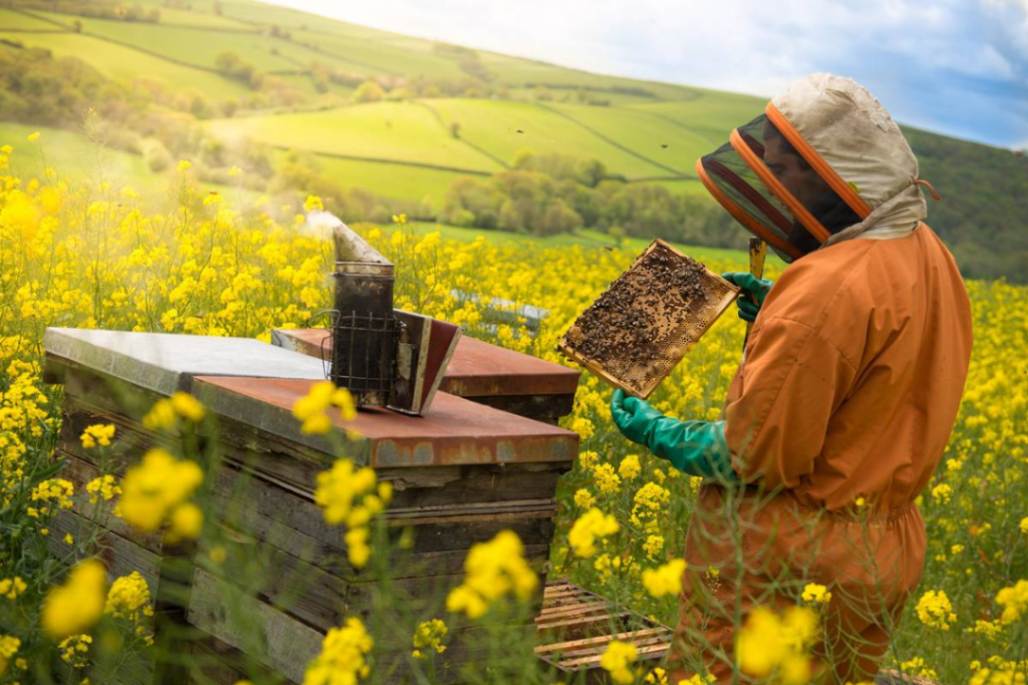With the commencement of the COP-28 Summit in Dubai placing the issue of climate change in the spotlight once more, let’s delve into the contribution of organic farming in alleviating the challenges posed by climate change.
Organic Farming as a Climate Change Solution
Climate change poses a significant threat to agriculture, impacting crop yields, water availability, and overall food security. In this context, organic farming emerges as a promising solution, offering both mitigation and adaptation strategies to combat the challenges posed by climate change. This article explores the correlation between organic farming and climate change, focusing on key aspects such as reduced greenhouse gas emissions, improved soil carbon sequestration, and increased resilience in the Indian agricultural context.

Reducing Greenhouse Gas Emissions:
Organic farming plays a crucial role in mitigating climate change by significantly reducing greenhouse gas emissions. The prohibition of fossil fuel-based fertilizers and synthetic pesticides in organic systems results in a lower carbon footprint. Studies indicate that eliminating synthetic nitrogen fertilizers alone, as mandated in organic farming, could lower global agricultural greenhouse gas emissions by approximately 20%.
A forty-year study conducted by the Rodale Institute reveals that organic farms in India can use 45% less energy compared to conventional farms while maintaining or even exceeding yields. Furthermore, the avoidance of fumigant pesticides, commonly used in conventional farming, helps prevent the emission of nitrous oxide (N2O), a potent greenhouse gas. In India, where agriculture is a significant contributor to emissions, the adoption of organic farming practices can contribute substantially to climate change mitigation.
Improving Soil Carbon Sequestration:
Organic agriculture’s foundation lies in soil-boosting practices that enhance carbon sequestration. Meta-analyses comparing thousands of farms in India demonstrate that organic agriculture results in higher stable soil organic carbon and reduced nitrous oxide emissions compared to conventional farming. The use of pesticides in conventional farming has been associated with damage to soil invertebrates, crucial for carbon sequestration. With the widespread adoption of organic farming, Indian soils could potentially absorb more carbon than the agricultural sector emits, contributing to a positive carbon balance.
Increasing Resilience:
In the face of climate uncertainties, organic farming in India proves to be a resilient and adaptive agricultural system. Organic farmers prioritize practices such as composting, crop rotation, and natural inputs, promoting healthy soil that can withstand extreme weather conditions. By increasing organic matter in the soil, organic agriculture enhances water retention and percolation, crucial for water-scarce regions in India.
Decades-long trials have shown that organic yields can be up to 40% higher than nonorganic farms during drought years. With India experiencing increased frequency of extreme weather events, heat stress, and unpredictable climatic patterns, the resilience offered by organic farming becomes essential for the livelihoods of Indian farmers.

Organic Agriculture and the Green Economy Transformation
Organic agriculture holds the potential to act as a catalyst in the transformation towards a green economy, rejuvenating the farm and food sector while creating employment opportunities that yield higher returns on labor input across the entire value chain. This transformative shift not only enhances income and food security for rural communities but also presents lucrative business prospects for investors. Moreover, it elevates the contribution of agriculture to national economies by reducing import expenditures on farm inputs, fostering organic product exports, and mitigating the societal costs associated with the negative externalities of industrial farming.
Conventional industrial agriculture, reliant on external inputs such as fossil fuels, synthetic fertilizers, and pesticides, achieves high yields per hectare but at the expense of escalating greenhouse gas emissions, land degradation, and depletion of natural capital. When accounting for externalities like soil erosion, diminished natural crop resistance to pests, adverse impacts on human health and life due to chemical exposure, loss of biodiversity and ecosystems, water contamination, and climate change-related costs, the overall toll imposed by intensive industrial farming outweighs its benefits.
In stark contrast, organic agriculture emerges as an opportunity for the world to safeguard and enhance its natural capital. By curbing emissions, creating carbon sinks, preserving soil organic matter, and fostering biodiversity, organic farming delivers substantial public benefits and services. Estimations reveal that organic production provides environmental advantages valued at US$220-270 per hectare per year, encompassing US$40 for carbon sequestration and an additional US$30 for various biodiversity services. The avoidance of negative externalities, such as soil erosion and pesticide contamination, further translates into savings ranging from US$150-200 per hectare per year compared to conventional methods. Beyond the economic gains, improved soil management enhances land value significantly.
While organic agriculture demands considerable investments in enhancing the capacities and skills of farmers and the entire value chain, coupled with institutional strengthening and infrastructure development, the returns in terms of economic, social, and environmental benefits are noteworthy.
Acknowledging the broader societal advantages of organic agriculture, public sector support in the form of policy reforms and investments becomes crucial. The benefits extend beyond individual farmers and private investors to benefit society as a whole.
Conclusion:
In summary, organic agriculture emerges as a guiding light in our efforts to tackle the challenges posed by climate change and seamlessly shift towards a sustainable green economy. Beyond revitalizing the agricultural sector and fostering employment opportunities, it represents a hopeful path forward.
Interestingly in this dynamic landscape of organic farming and its pivotal role in climate change mitigation, Sapagro emerges as a beacon. This pioneering training institute, under the leadership of Mr. Sachin Palkar, a seasoned expert in organic practices, is sowing the seeds of environmental sustainability and conservation. With over 16 years of hands-on experience and a Horticulture Postgraduate background, Mr. Palkar is championing best practices, endorsing crop rotation, composting, and biological pest control.
At Sapagro, the focus extends beyond theoretical knowledge as practical training initiatives empower farmers with effective organic techniques. The institute’s commitment to steering away from synthetic fertilizers and pesticides aligns with the principles of sustainable cultivation. Endorsed by organic farmers, processors, traders, government institutions, and Agricultural Universities, Sapagro has played a crucial role in training over 20,000 farmers and converting an additional 10,000 acres of land to organic cultivation. In doing so, Sapagro stands as a beacon of hope, cultivating not just crops but a greener tomorrow, one farmer at a time.
Visit Sapagro to learn more about us.
If you are interested in learning digital marketing, then Moving Digits is the ideal institute to help you land a career in the realm of Internet Marketing.






